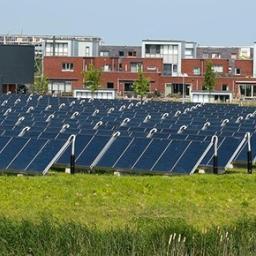The price of protein: Review of land use and carbon footprints from Life cycle assessments of animal food products and their substitutes
Sources of protein in our diet, such as meat, dairy products and seafood can have significant environmental impacts. There are however very large differences between products, both in land requirement and in carbon footprint. The PBL Netherlands Environmental Assessment Agency reviewed several LCA studies (Life Cycle Assessment) of animal and vegetal products. Per kilogram of protein, pulses and poultry products are examples of sources with relatively low scores on these environmental indicators.
Animal husbandry, aquaculture and fisheries have major impacts on the environment. A common method to analyse these impacts in a consistent and standardised way is the ‘Life Cycle Assessment’ (LCA). This method is internationally recognised, and ISO standards (ISO 14040 and 14044) provide guidelines for conducting LCAs. LCAs can be used to identify the most important contributors in a production chain, or to make a systematic comparison of different products or production methods.
We analysed 52 life cycle assessment studies (LCA’s) on animal and vegetal sources of protein in the human diet. Our analysis was focused only on land requirement and carbon footprints. The goals were to:
- identify the ranges in land requirements and carbon footprints of different sources of protein;
- identify the most important inputs and processes in the life cycles;
- identify the main causes of the identified differences.
Generally may be concluded that the carbon footprints of the most climate-friendly protein sources are up to 100 times smaller than those of the most climate-unfriendly. The differences between footprints were found to be due mainly to differences in production systems. The outcomes for pig meat and poultry products show much more homogeneity than for beef and seafood. This is largely because both beef and seafood have a wide variety of production systems. Land use (occupation), comprising both arable land and grassland, also varies strongly, ranging from negligible for seafood to over 2000 m2 per kilogram of protein for extensive cattle farming. For poultry products only approximately 30 m2 is needed per kg of protein. Of the entire process from 'farm to fork', feed production and animal husbandry, generally speaking, are by far the most important contributors to the environmental impacts.
Authors
Specifications
- Publication date
- 26 September 2012
- Publication type
- Publication
- Magazine
- Publication Food Policy 37 (2012) 760–770
- Product number
- 907




